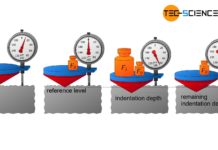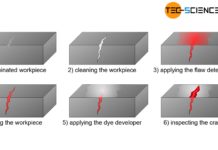The relaxation strength indicates for a certain temperature to which value the stress falls at a given strain after a certain time!
In the creep rupture test, material samples are subjected to a constant stress at elevated temperature and the strain is measured as a function of time. In some cases, however, such as for bolted connections, the loading at high temperatures is just the other way round. After the screw has been tightened, the screw shaft is subjected to constant strain, while creep causes the stress to decrease over time. This “stress relief” is also called relaxation and gradually leads to the screw becoming “loose”.

In order to assess such a relaxation behavior of materials, samples are clamped and stretched in a fixed device at elevated temperature in so-called stress-relaxation tests. The strain is maintained constantly by the clamping while the temporal drop of the stress is measured. The characteristic value obtained from the relaxation test is called the relaxation strength.
The relaxation strength indicates for a certain temperature to which value the stress falls at a given strain after a certain time!







